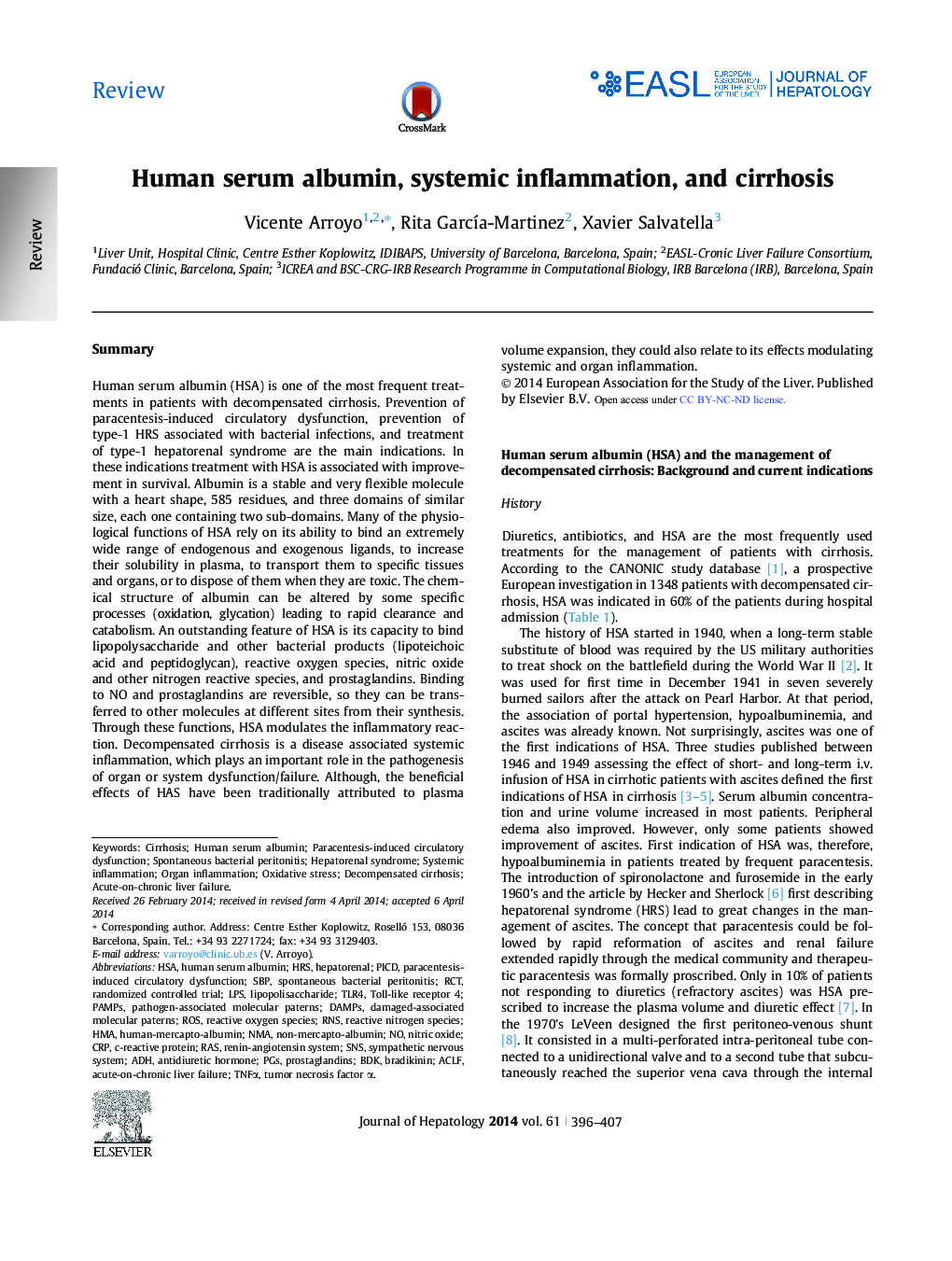| کد مقاله | کد نشریه | سال انتشار | مقاله انگلیسی | نسخه تمام متن |
|---|---|---|---|---|
| 6103501 | 1211129 | 2014 | 12 صفحه PDF | دانلود رایگان |

SummaryHuman serum albumin (HSA) is one of the most frequent treatments in patients with decompensated cirrhosis. Prevention of paracentesis-induced circulatory dysfunction, prevention of type-1 HRS associated with bacterial infections, and treatment of type-1 hepatorenal syndrome are the main indications. In these indications treatment with HSA is associated with improvement in survival. Albumin is a stable and very flexible molecule with a heart shape, 585 residues, and three domains of similar size, each one containing two sub-domains. Many of the physiological functions of HSA rely on its ability to bind an extremely wide range of endogenous and exogenous ligands, to increase their solubility in plasma, to transport them to specific tissues and organs, or to dispose of them when they are toxic. The chemical structure of albumin can be altered by some specific processes (oxidation, glycation) leading to rapid clearance and catabolism. An outstanding feature of HSA is its capacity to bind lipopolysaccharide and other bacterial products (lipoteichoic acid and peptidoglycan), reactive oxygen species, nitric oxide and other nitrogen reactive species, and prostaglandins. Binding to NO and prostaglandins are reversible, so they can be transferred to other molecules at different sites from their synthesis. Through these functions, HSA modulates the inflammatory reaction. Decompensated cirrhosis is a disease associated systemic inflammation, which plays an important role in the pathogenesis of organ or system dysfunction/failure. Although, the beneficial effects of HAS have been traditionally attributed to plasma volume expansion, they could also relate to its effects modulating systemic and organ inflammation.
Journal: Journal of Hepatology - Volume 61, Issue 2, August 2014, Pages 396-407